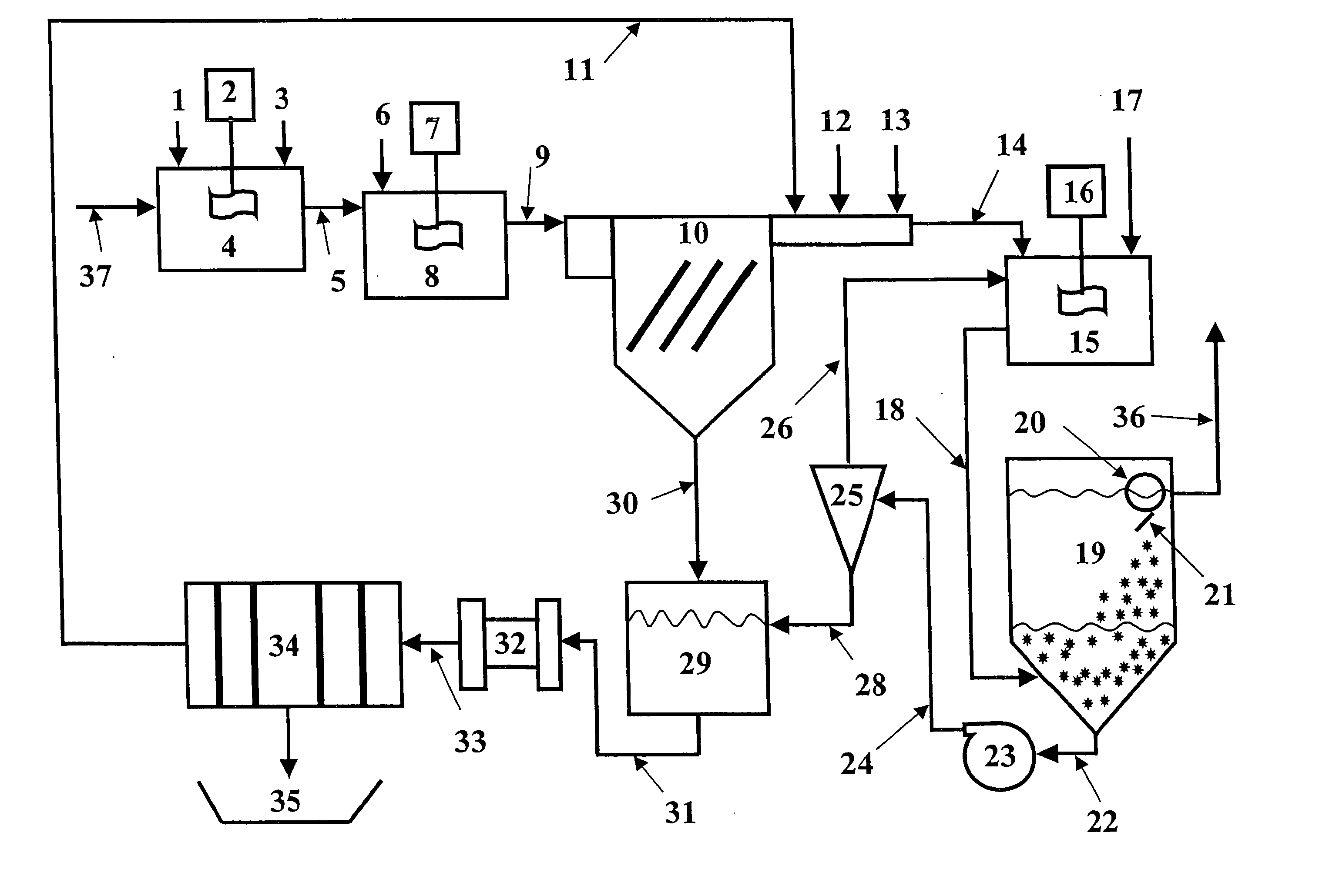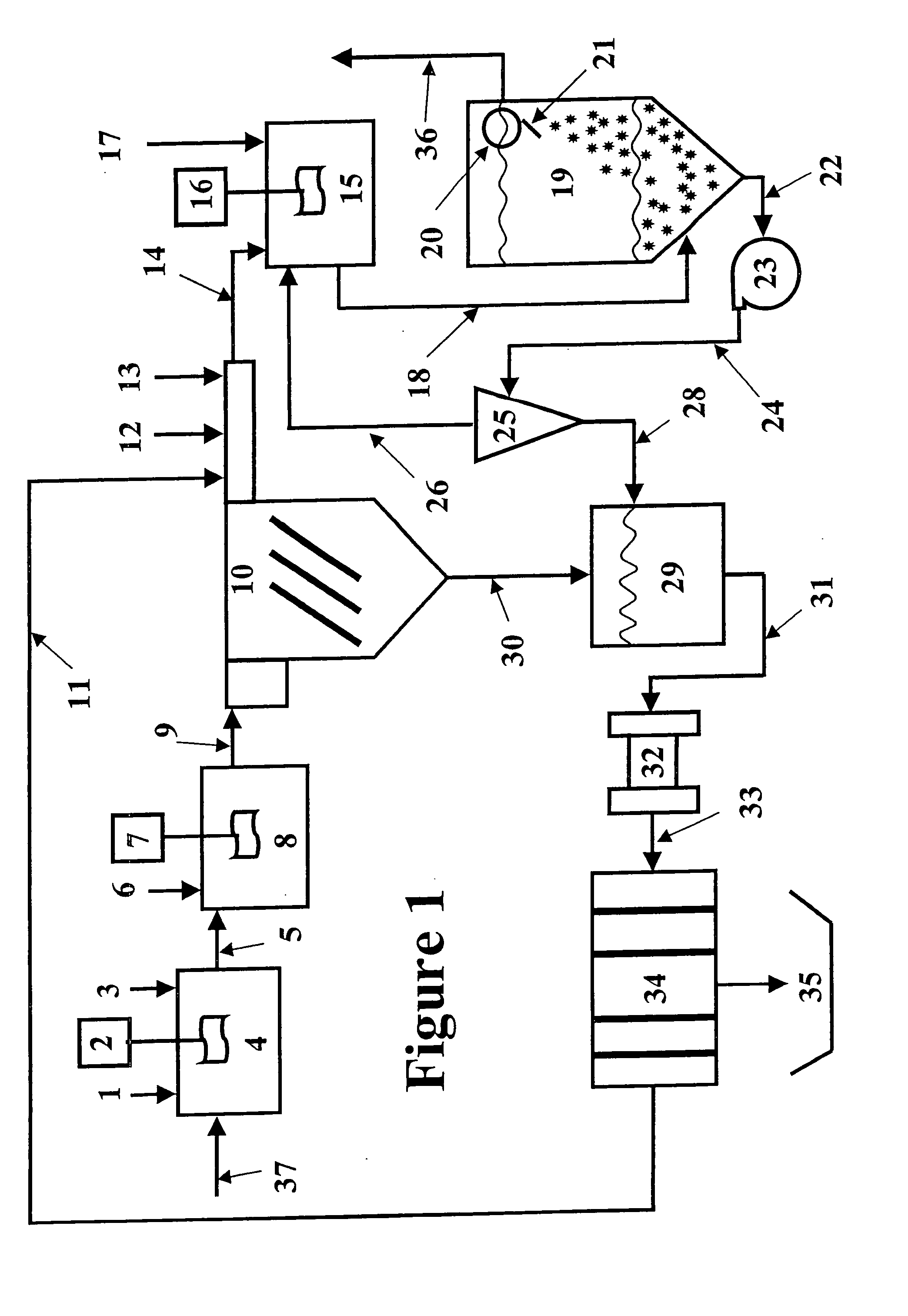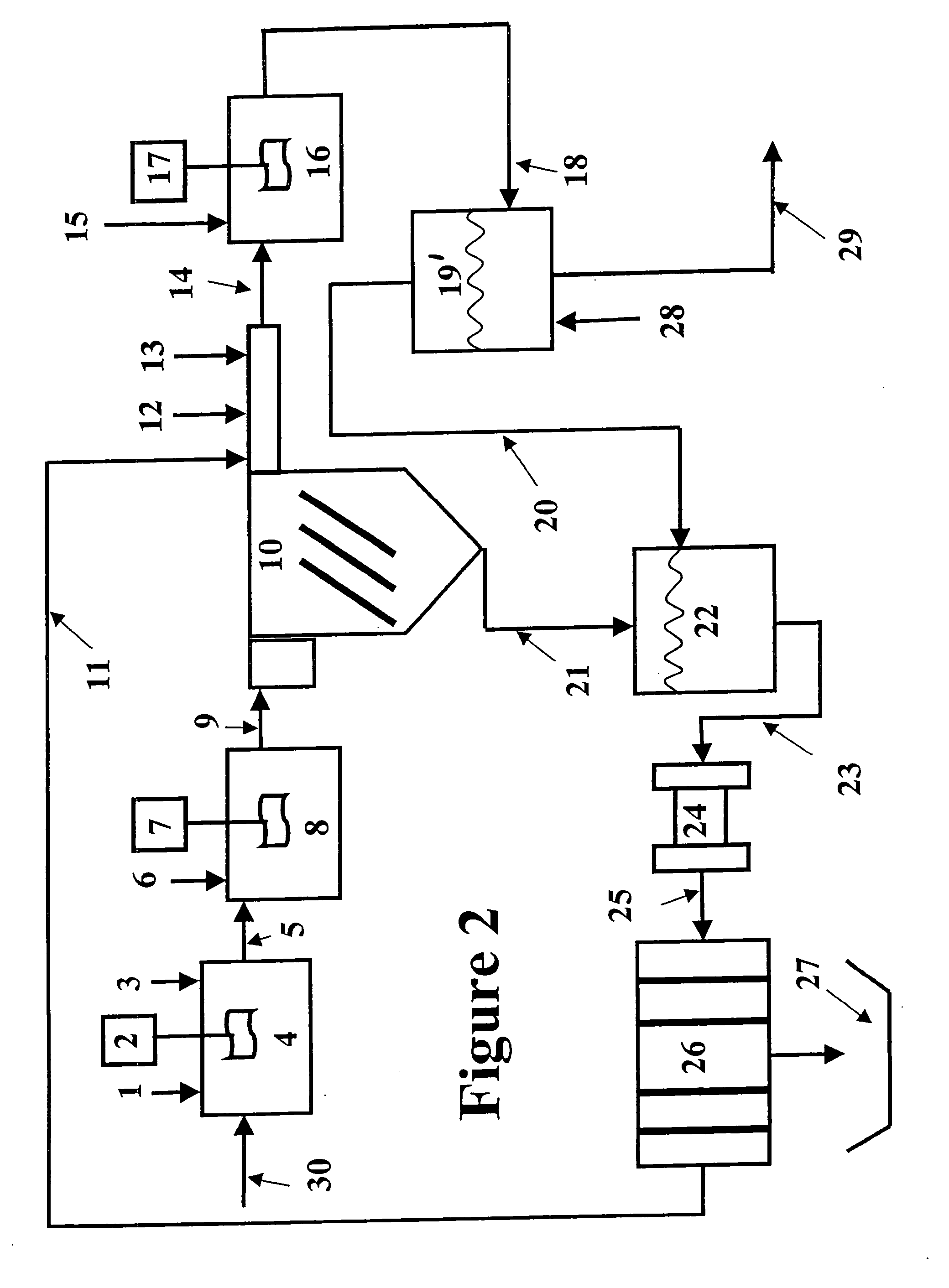Methods for removing heavy metals from water using chemical precipitation and field separation methods
a technology of heavy metals and chemical precipitation, which is applied in the direction of filtration separation, multi-stage water/sewage treatment, separation process, etc., can solve the problems of high cost of treatment, insufficient effectiveness of hydroxide precipitation, and inability to remove heavy metals in waste streams, etc., to achieve enhanced flotation, easy removal, and efficient removal of fine contaminant particles
- Summary
- Abstract
- Description
- Claims
- Application Information
AI Technical Summary
Benefits of technology
Problems solved by technology
Method used
Image
Examples
Embodiment Construction
[0070] The magnetic separation and the expanded plastics flotation embodiments of the invention were selected for data collection to demonstrate the effectiveness of a two-stage precipitation process with a selected “field separation” process according to the invention. Equipment limitations prevented collecting data for the DAF and vortex separation embodiments, but it is known in the art that these technologies can effectively remove fine particles.
[0071] The first step of the method of the invention as employed to remove heavy metals from a water stream is hydroxide precipitation. Over a number of laboratory tests from all types of water, the first step precipitation resulted in removal efficiencies of 95.7-98.5% with an average removal efficiency of 96.8%. This removal level lowered the dosage requirements for advanced metal precipitants by 89%. The main goal of this testing was to prove that lesser quantities of treatment chemicals would be used, while better metal removal lev...
PUM
| Property | Measurement | Unit |
|---|---|---|
| Particle size | aaaaa | aaaaa |
| Digital information | aaaaa | aaaaa |
| Force | aaaaa | aaaaa |
Abstract
Description
Claims
Application Information
 Login to View More
Login to View More - R&D
- Intellectual Property
- Life Sciences
- Materials
- Tech Scout
- Unparalleled Data Quality
- Higher Quality Content
- 60% Fewer Hallucinations
Browse by: Latest US Patents, China's latest patents, Technical Efficacy Thesaurus, Application Domain, Technology Topic, Popular Technical Reports.
© 2025 PatSnap. All rights reserved.Legal|Privacy policy|Modern Slavery Act Transparency Statement|Sitemap|About US| Contact US: help@patsnap.com



